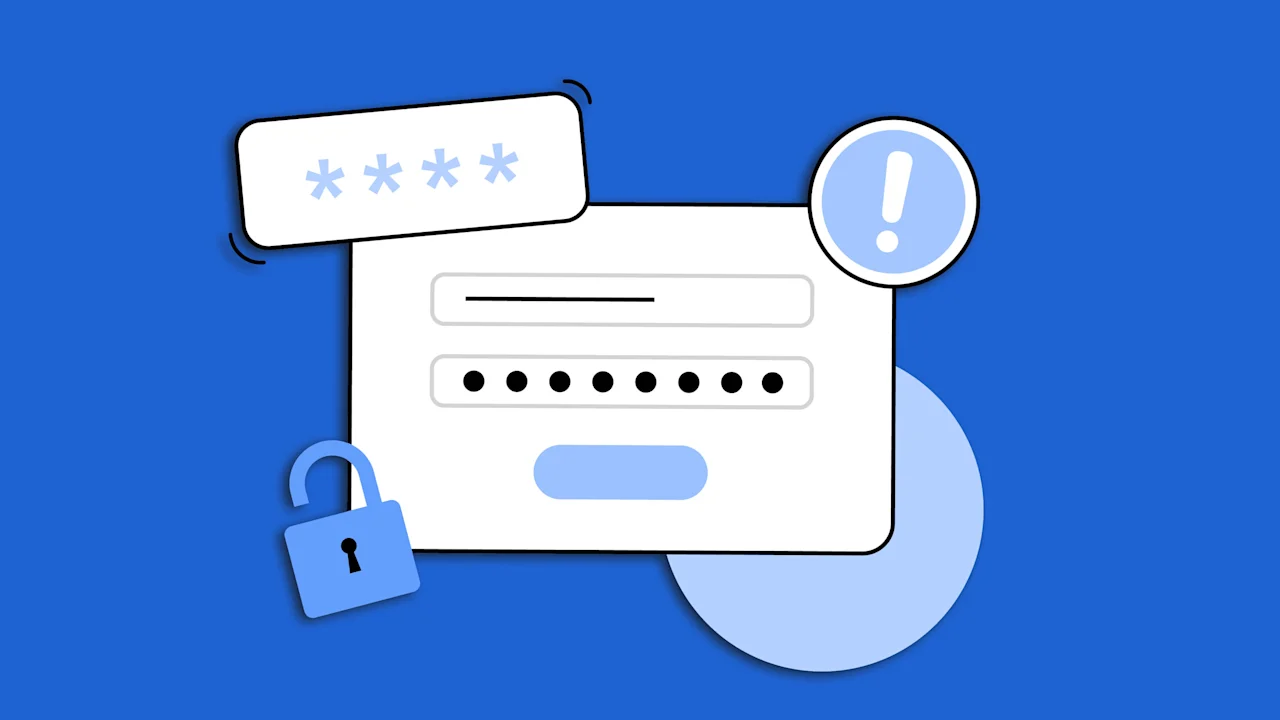Understanding What is Spamming: Definition, Types, and Impact

Key Takeaways

- Definition of Spamming: Spamming involves sending unsolicited messages to many users, disrupting their online experience and posing security risks.
- Types of Spam: Common forms include email spam, social media spam, and comment spam, each posing different risks to users and businesses alike.
- Impact on Users: Spam can lead to lost productivity, cybersecurity threats, and an overall negative online experience, making it crucial for users to filter out such communications.
- Business Ramifications: For businesses, spam increases operational costs, can damage reputation, and diverts resources, emphasizing the need for effective anti-spam technologies.
- Identification Techniques: Recognizing spam involves looking for unsolicited messages, generic greetings, unknown senders, and poor language—key characteristics that signal potential threats.
- Prevention Strategies: Implementing strategies like using temporary emails, activating spam filters, and reporting spam can significantly enhance digital security and improve online interactions.
You’ve probably encountered spam in your inbox or on social media. It’s that annoying flood of unsolicited messages that clutters your digital life. But what exactly is spamming? At its core, spamming involves sending irrelevant or inappropriate messages to a large number of users, often for commercial purposes.
Spammers exploit various platforms, from email to social media, to promote products or services that most people don’t want. This not only disrupts your online experience but can also pose security risks. Understanding spamming is crucial in today’s digital world, where protecting your privacy and maintaining a clean inbox is more important than ever. Let’s dive deeper into the different types of spam and how you can shield yourself from it.
Understanding Spamming

Spamming refers to the practice of sending unwanted or irrelevant messages to a large audience, often for commercial gains. You may encounter spam in various forms, including emails, social media posts, and unwanted comments. This practice disrupts your online experience and creates security risks.
Spammers utilize techniques like phishing, where they impersonate credible sources to steal sensitive information. They often promote unwanted products or services through deceptive tactics. Recognizing spam helps you safeguard your privacy and ensures a cleaner digital environment.
Implementing robust cybersecurity measures, such as spam filters, can significantly reduce unwanted communications. You can strengthen data security by adopting tools that identify and block spam. Additionally, utilizing business software equipped with reporting features can help you quickly address spam threats.
For small businesses, understanding spamming is crucial to protect your IT infrastructure and maintain efficient digital marketing strategies. Leveraging digital tools for business can streamline communications while avoiding spam pitfalls. Investing in tech support and automation software aids in managing your online presence, minimizing the risk of spam exposure.
By staying informed about spamming practices, you enhance your business’ ability to operate effectively in a digital landscape where cybersecurity and data protection are paramount.
Types of Spamming

Understanding the various types of spamming helps you protect your small business’s online presence and maintain data security. Below are key categories of spamming that may affect your digital environment.
Email Spam
Email spam involves sending unsolicited messages to many recipients. These emails often promote irrelevant products, include phishing attempts, or contain links to malicious websites. Email spam can lead to significant security risks and lost productivity. Implementing robust cybersecurity measures, such as spam filters and email authentication protocols, enhances your email security and protects valuable information.
Social Media Spam
Social media spam encompasses unwanted content on platforms like Facebook, Twitter, and Instagram. It appears as:
- Irrelevant comments: Comments unrelated to the original post clutter discussions.
- Promotional offers: Repeated posts divert attention from genuine interactions.
- Hashtag hijacking: Using unrelated hashtags draws attention to products unrelated to the original topic.
Combating social media spam can improve your brand’s reputation and foster a better online community by utilizing social media tools to monitor and manage content effectively.
Comment Spam
Comment spam, often referred to as “spomment,” occurs when irrelevant or promotional messages are posted on blogs, forums, or social media. These comments typically contain links aimed at generating traffic to spammer websites. Comment spam can undermine audience engagement and distract from genuine conversations. Implementing comment moderation tools or software solutions helps maintain the integrity of your online platforms while protecting your business’s digital assets.
Effects of Spamming

Spamming negatively affects both users and businesses significantly. Understanding these impacts is essential for safeguarding your operations.
Impact on Users
Users face various challenges due to spamming. They spend considerable time filtering spam messages, leading to lost productivity. Spam often hides malware and phishing links, posing serious cybersecurity risks. This compromises personal data and device security. Repeated exposure to unsolicited messages can create annoyance and distraction, degrading the overall online experience. Ensuring effective email filtering and using robust cybersecurity measures like antivirus software can mitigate these risks.
Impact on Businesses
Businesses encounter increased costs when dealing with spamming. Internet service providers face higher expenses related to managing and filtering spam traffic. Implementing anti-spam technologies and increasing server capacity involves significant financial investments. Your company’s reputation can also suffer if emails are mistakenly flagged as spam, eroding customer trust. Compliance with anti-spam laws can complicate operations, leading to legal penalties for non-compliance. Additionally, managing spam diverts valuable resources away from core business activities, signaling a need for streamlined tech integration and effective digital tools. Focusing on cybersecurity and adopting automated solutions can help reduce the burden and improve overall efficiency.
How to Identify Spam

Identifying spam is vital for protecting your small business from unwanted digital communications. Recognizing spam messages helps you maintain cybersecurity and safeguard your IT infrastructure.
Common Characteristics
- Unsolicited Nature: Spam messages get sent without your consent. You didn’t request these communications.
- Bulk Distribution: Spammers typically target a large number of recipients at once. Such mass outreach looks suspicious.
- Irrelevant or Inappropriate Content: Spam often promotes products or services that do not align with your business needs.
Red Flags
- Unknown Senders: Messages from unfamiliar email addresses or phone numbers might signify spam. Always verify the sender’s credibility.
- Generic Greetings: Spam frequently lacks personalization. Messages addressing you with generic terms raise red flags.
- Urgent or Threatening Language: Spammers use language that creates an artificial sense of urgency. Be cautious of messages demanding immediate action.
- Spelling and Grammar Mistakes: Poorly written messages often indicate spam. Look for typos and grammatical errors to identify suspicious communications.
- Suspicious Links or Attachments: Avoid clicking on links or opening attachments from unknown sources. These could lead to malware or phishing attempts.
Protective Measures
- Be Cautious with Unknown Senders: Never open messages from unfamiliar sources. This simple action can significantly enhance your cybersecurity.
- Use Temporary Email Addresses: When registering for services you only use once, consider temporary email addresses. This action reduces spam in your primary inbox.
- Opt Out of Promotional Emails: Regularly unsubscribe from unwanted promotional emails. This step helps streamline your email communications.
- Report Spam: If you receive spam messages, report them. Taking this action helps platforms filter out future spam and enhances your data security.
By identifying these spam characteristics and implementing protective measures, you can better secure your small business while utilizing digital tools effectively.
Prevention and Protection Strategies
To protect your business from spamming, implement these effective strategies:
Email and General Online Activities
- Use Temporary Email Addresses: Use temporary email addresses for one-time registrations. This limits unwanted communications in your primary inbox.
- Opt Out of Promotional Emails: Unsubscribe from promotional emails to reduce spam. By doing so, you enhance your data security and improve inbox management.
- Be Cautious with Unknown Senders: Avoid interacting with messages from unknown senders. Ignoring these reduces the risk of phishing scams that can compromise your IT infrastructure.
Form Filling and Data Sharing
- Limit Personal Information: Only provide essential information when filling out forms. Avoid sharing your phone number and email address unnecessarily to minimize exposure to spamming.
Reporting Spam
- Report Spam Messages: If you encounter spam, report it to the relevant platform. Reporting strengthens community efforts against unwanted digital communications.
Technical Measures
- Use Spam Filters: Activate spam filters on your email services. Utilizing these tools automatically clears out unwanted messages, enhancing your productivity.
- Update Software and Security Tools: Keep all software and security tools up-to-date. Regular updates protect against the latest threats and improve your overall cybersecurity.
Social Media and Comment Sections
- Be Wary of Bots and Fake Accounts: Remain cautious of messages from bots or fake accounts on social media. Identifying these accounts helps maintain engagement authenticity on your platforms.
By adopting these preventive measures, you enhance your small business’s cybersecurity and maintain a streamlined digital experience, allowing for effective digital marketing and the use of online tools.
Conclusion
Understanding spamming is vital for navigating today’s digital landscape. By recognizing the various forms of spam and their potential impacts on your online experience and business, you can take proactive steps to protect yourself. Implementing effective strategies like using temporary email addresses and activating spam filters can significantly reduce unwanted communications.
Staying informed about spamming tactics not only safeguards your privacy but also enhances your overall digital presence. As you prioritize cybersecurity measures, you’ll create a more efficient and secure online environment for both yourself and your business. Embrace these practices to maintain a clean inbox and a positive online reputation.
Frequently Asked Questions
What is spamming?
Spamming is the act of sending irrelevant or inappropriate messages to a large audience, usually for commercial purposes. It disrupts users’ experiences online and can pose security risks.
How does spamming affect users?
Users face wasted time filtering spam, exposure to malware and phishing links, and a degraded online experience. Unwanted messages can be both annoying and potentially harmful.
What are the different types of spam affecting businesses?
The main types of spam include email spam, social media spam (like irrelevant comments), and comment spam (or “spomment”), which distract from genuine conversations on blogs and forums.
How can businesses protect against spamming?
Businesses can implement robust cybersecurity measures like spam filters, use temporary email addresses, and be cautious with unknown senders. Regularly updating software also enhances protection.
What are the signs that an email is spam?
Common signs of spam include unsolicited messages, bulk distribution, generic greetings, urgent language, and poor grammar. Users should be cautious if they recognize these red flags.
How can small businesses manage spam in their digital marketing?
Small businesses can streamline their communications by using spam filters, moderating online platforms, and maintaining a cautious approach to sharing personal information during registrations.
What is phishing, and how is it related to spamming?
Phishing is a technique used by spammers to impersonate credible sources in order to steal sensitive information. It often leads to sign-up forms or links that can compromise security.
Why is understanding spamming important for businesses?
Understanding spamming helps businesses protect their IT infrastructure, manage digital marketing strategies effectively, and ultimately safeguard their reputation and customer relationships online.
Image Via Envato
This article, "Understanding What is Spamming: Definition, Types, and Impact" was first published on Small Business Trends
What's Your Reaction?
 Like
0
Like
0
 Dislike
0
Dislike
0
 Love
0
Love
0
 Funny
0
Funny
0
 Angry
0
Angry
0
 Sad
0
Sad
0
 Wow
0
Wow
0






























































































